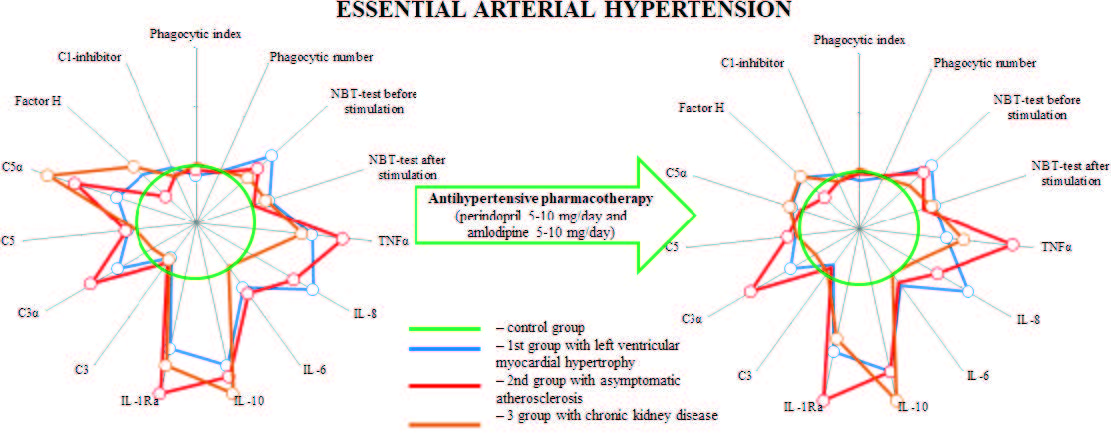Antihypertensive Pharmacotherapy in Correcting the Indicators of Innate Immunity in Patients with Essential Arterial Hypertension
DOI:
https://doi.org/10.3897/rrpharmacology.6.58787Аннотация
Introduction: The study of indicators of innate immunity in patients with arterial hypertension in clinical trials makes it necessary to correct them in order to reduce vascular inflammation in arterial hypertension to prevent damage to target organs and development of cardiovascular complications. The aim of the study was to assess the effectiveness of antihypertensive therapy to correct indicators of innate immunity in patients with essential arterial hypertension.
Materials and methods: Patients with essential arterial hypertension (EAH) (II stage, 3rd degree) were divided into 3 groups: the 1st group included the patients with hypertrophy of the left ventricular myocardium; the 2nd group included the patients with atherosclerotic vascular lesions; the 3rd group included the patients with chronic kidney disease. As an initial antihypertensive pharmacotherapy, all the patients with essential arterial hypertension were prescribed perindopril (5–10 mg/day) and amlodipine (5–10 mg/day).
Results and discussion: Changes in innate immunity indices in patients with essential arterial hypertension (II stage, 3rd degree) are differentiated depending on the affected target organ. The antihypertensive pharmacotherapy with perindopril and amlodipine in patients with essential arterial hypertension has various corrective effects on impaired innate immunity, depending on the nature of target organ damage. Regardless of target organ damage, ноу antihypertensive therapy with perindopril and amlodipine does not affect the reduced functional and increased metabolic activities of peripheral blood neutrophils.
Conclusion: The results obtained dictate the need for further clinical studies of other classes of antihypertensive drugs and their combinations in the correction of innate immunity indices in order to effectively prevent the progression of target organ damage.
Graphical abstract:
 Русский
Русский
 English
English

